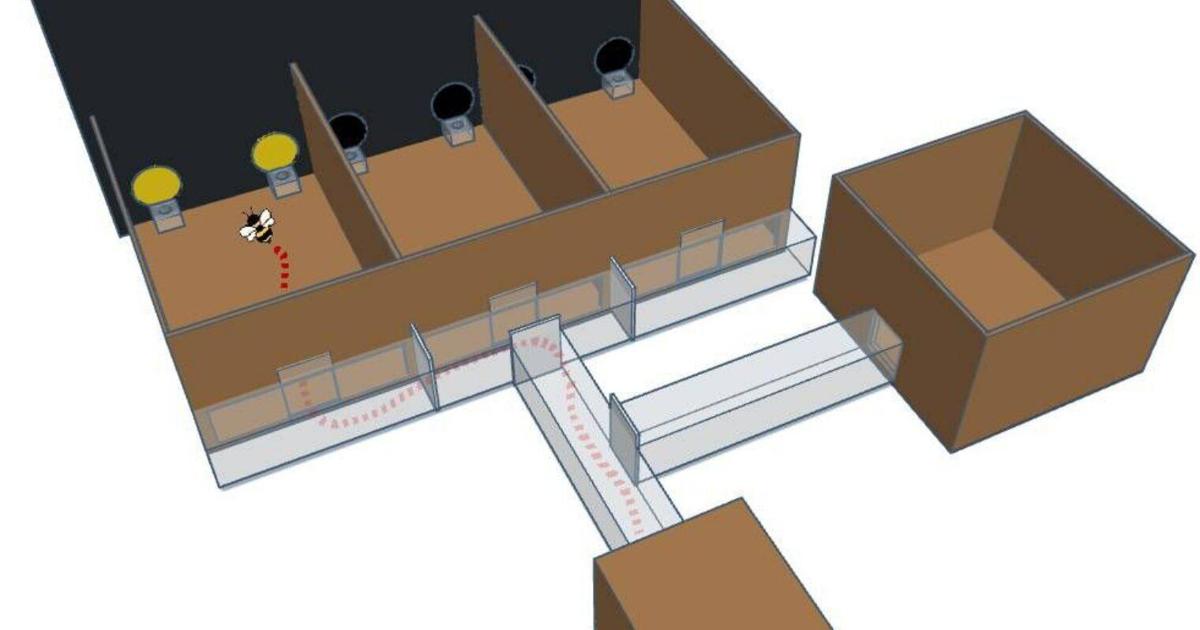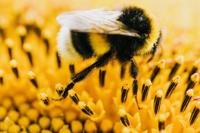By Stephen Beech
Bumblebees have learnt to read simple Morse code.
A new study is the first to show that an insect can decide where to forage for food based on different durations of visual cues.
In Morse code, a short duration flash or “dot” denotes a letter “E” and a long duration flash – or “dash” – means letter “T”.
Until now, the ability to discriminate between “dot” and “dash” has been seen only in humans and other vertebrates, including macaques or pigeons.
Researchers at Queen Mary University of London built a special maze to train individual bees to find a sugar reward at one of two flashing circles, shown with either a long or short flash duration.
For example, when the short flash – or “dot” – was associated with sugar, then the long flash – or “dash” – was instead associated with a bitter substance that bees dislike.
A new study is the first to show that an insect can decide where to forage for food based on different durations of visual cues. (SWNS)
At each room in the maze, the position of the “dot” and “dash” stimulus was changed, so that bees could not rely on spatial cues to orient their choices.
After bees learned to go straight to the flashing circle paired with the sugar, they were tested with flashing lights but no sugar present, to check whether their choices were driven by the flashing light, rather than by olfactory or visual cues present in the sugar.
Doctoral student Alex Davidson and his supervisor, Dr. Elisabetta Versace, who led the study published in the journal Biology Letters, say it was clear the bees had learnt to tell the lights apart based on their duration.
They explained that most of the bees went straight to the “correct” flashing light duration previously associated with sugar, irrespective of the spatial location of the stimulus.
Davidson said: “We wanted to find out if bumblebees could learn to the difference between these different durations, and it was so exciting to see them do it.
Experimental Apparatus used to study bees. (Alex Davidson / Queen Mary University via SWNS)
“Since bees don’t encounter flashing stimuli in their natural environment, it’s remarkable that they could succeed at this task.
“The fact that they could track the duration of visual stimuli might suggest an extension of a time processing capacity that has evolved for different purposes, such as keeping track of movement in space or communication.
“Alternatively, this surprising ability to encode and process time duration might be a fundamental component of the nervous system that is intrinsic in the properties of neurons.
“Only further research will be able to address this issue.”
The researchers say the neural mechanisms involved in the ability to keep track of time for the durations remain mostly unknown.
Several theories have been put forward, suggesting the presence of a single or multiple internal clocks.
(Photo by Karola G via Pexels)
Now that the ability to differentiate between durations of flashing lights has been discovered in insects, the researchers say they will be able to test different models in the “miniature brains” smaller than one cubic millimeter.
Dr. Versace, senior lecturer in psychology at Queen Mary, said: “Many complex animal behaviours, such as navigation and communication, depend on time processing abilities.
“It will be important to use a broad comparative approach across different species, including insects, to shed light on the evolution of those abilities.”
She added: “Processing durations in insects is evidence of a complex task solution using minimal neural substrate.
“This has implications for complex cognitive-like traits in artificial neural networks, which should seek to be as efficient as possible to be scalable, taking inspiration from biological intelligence.”





